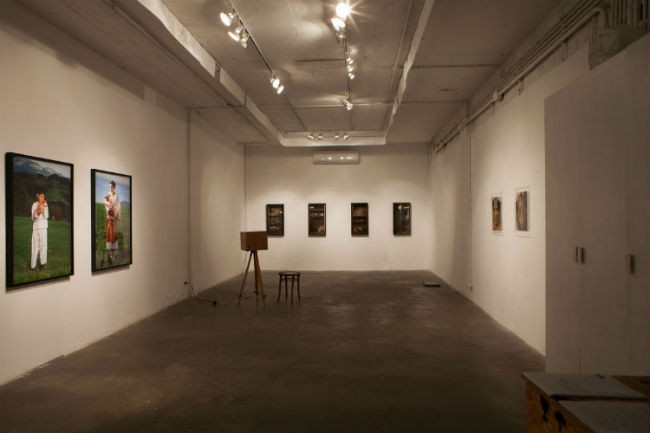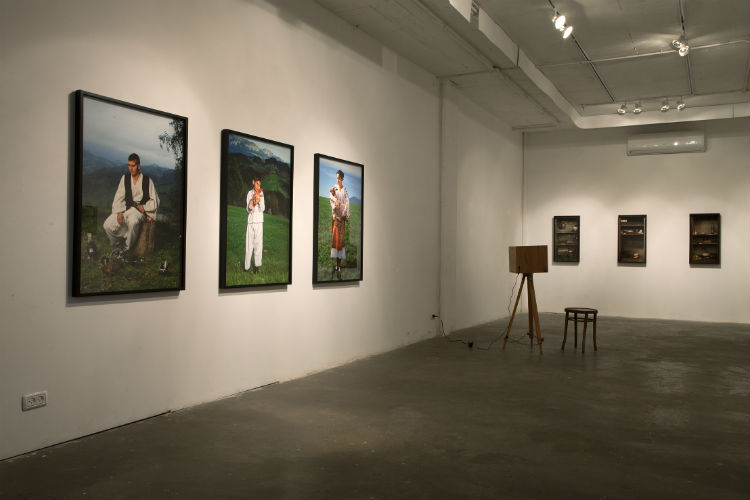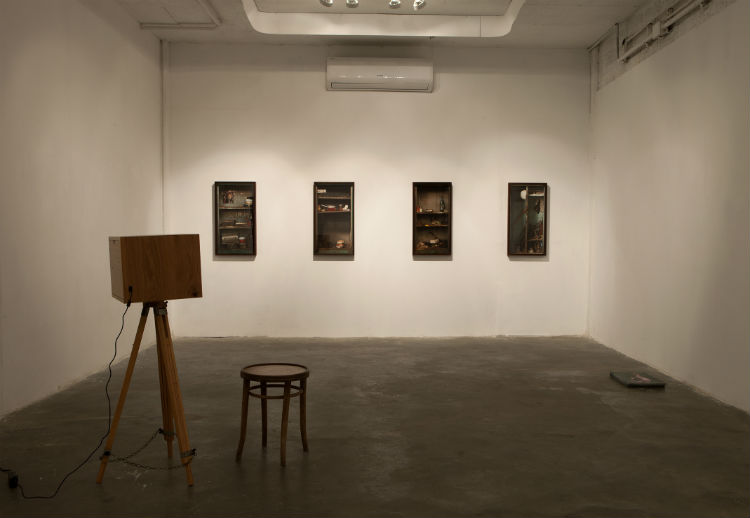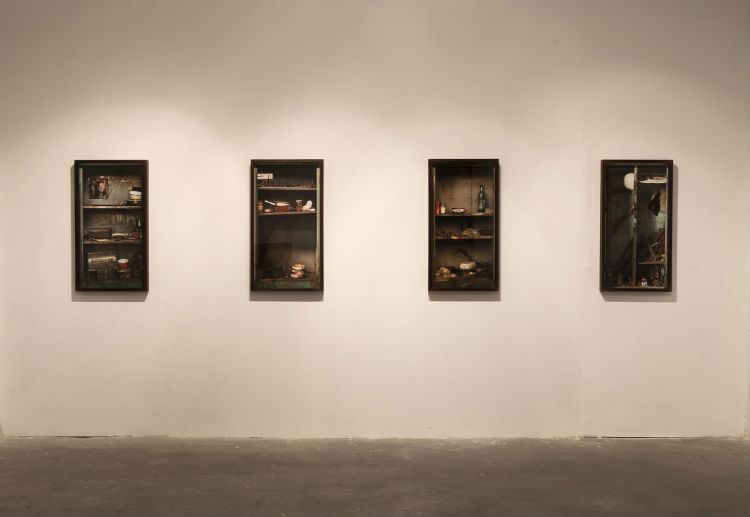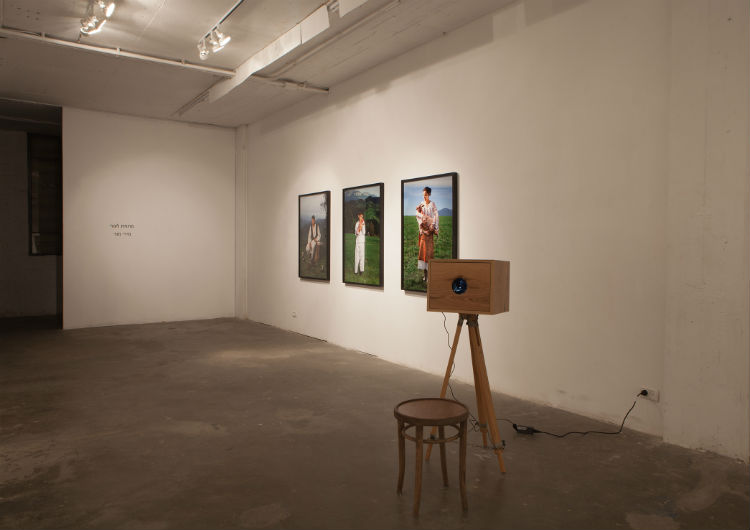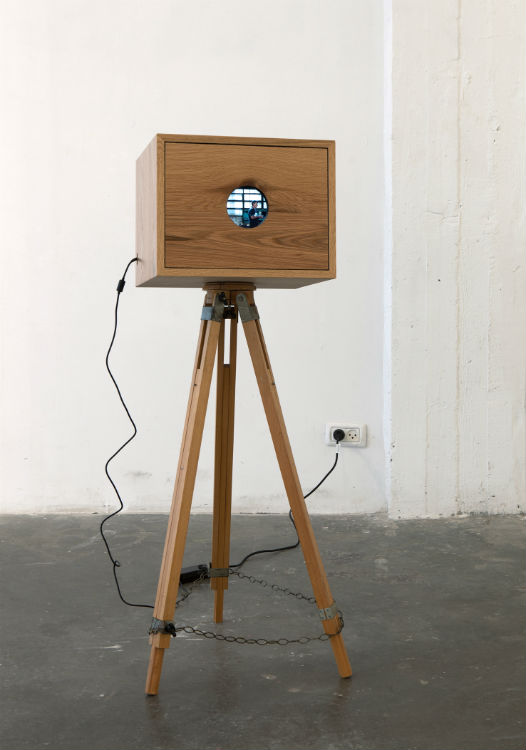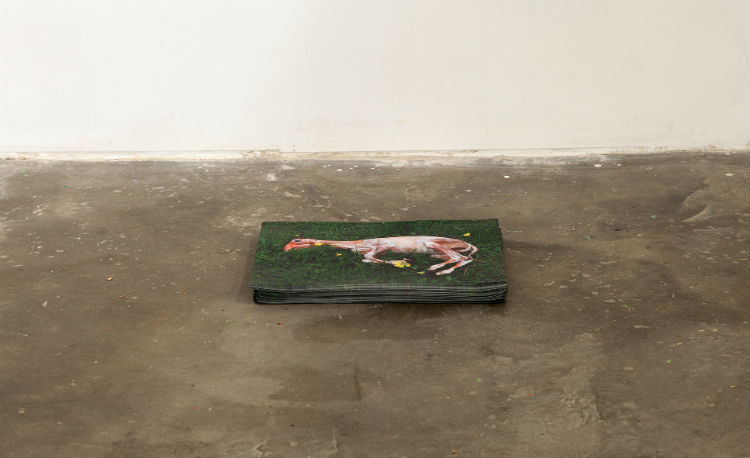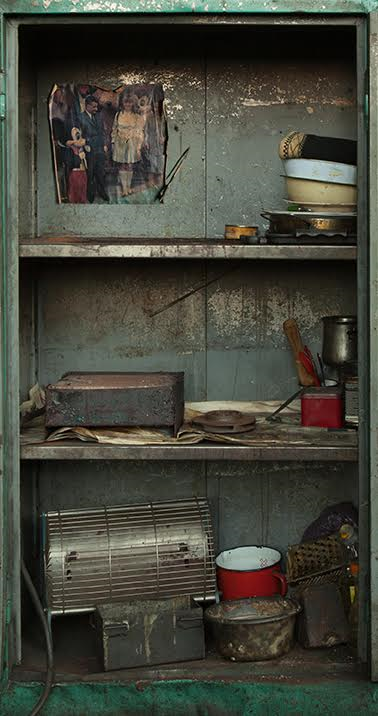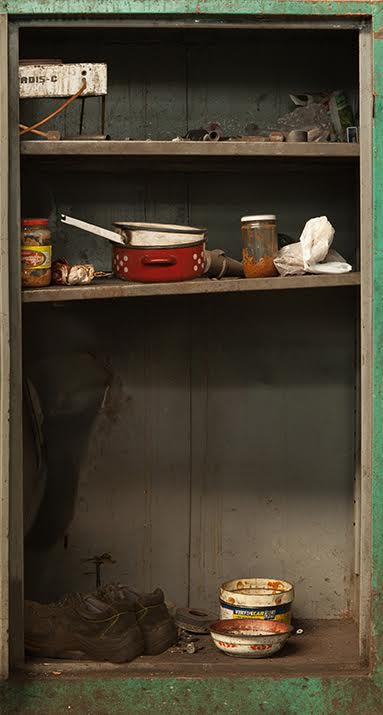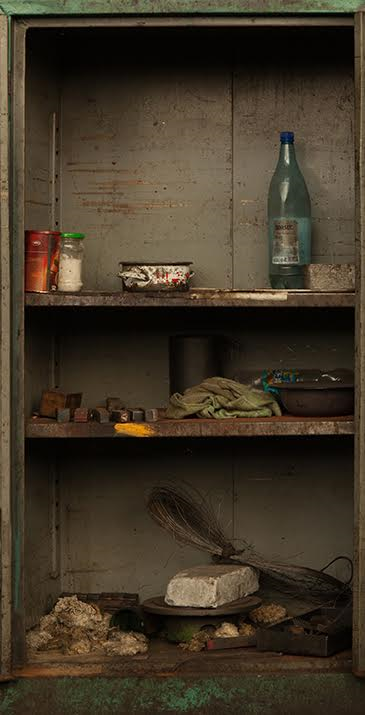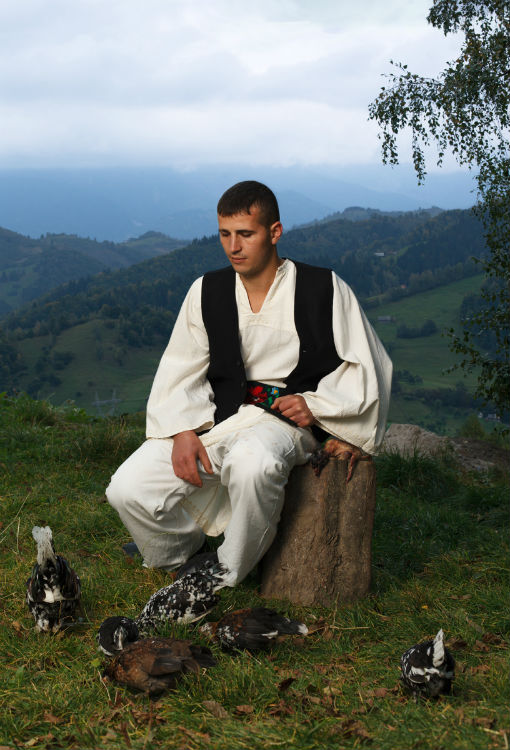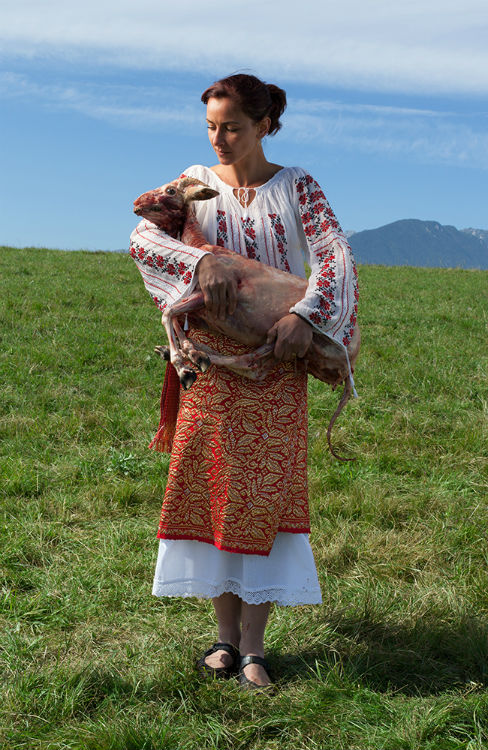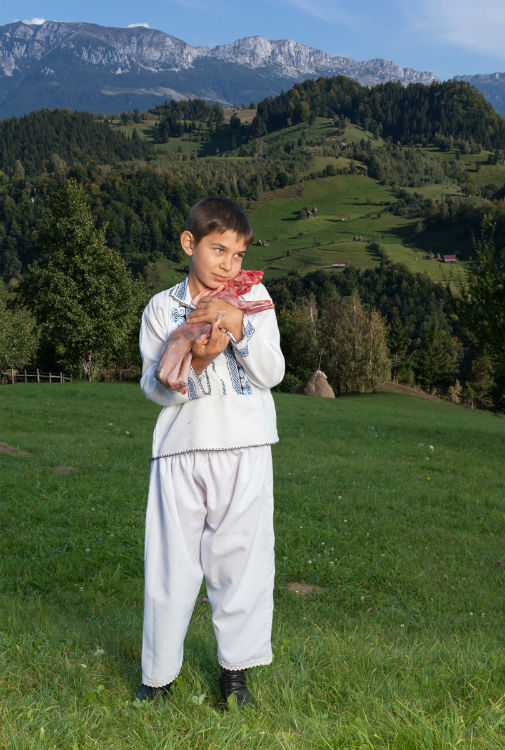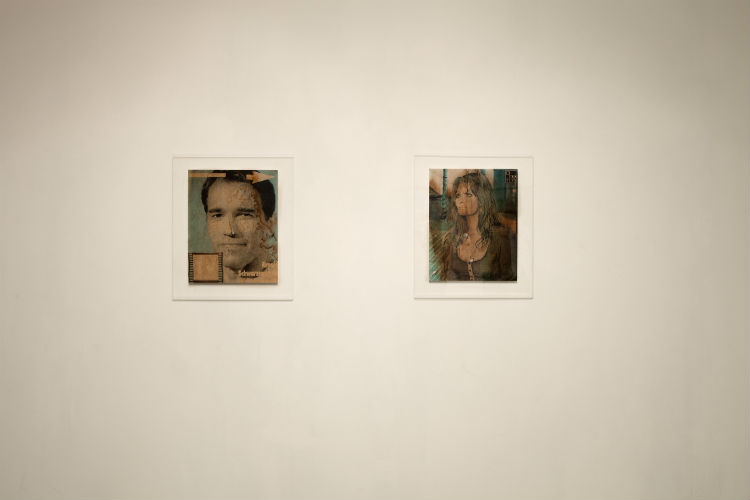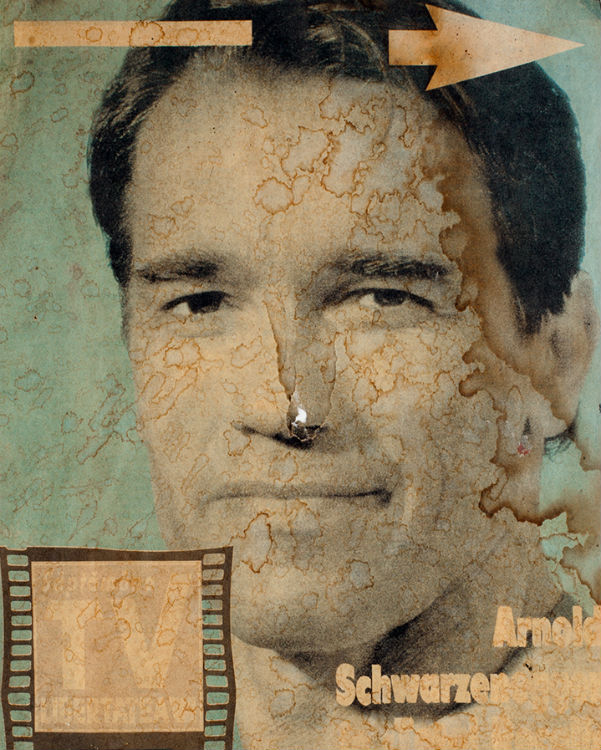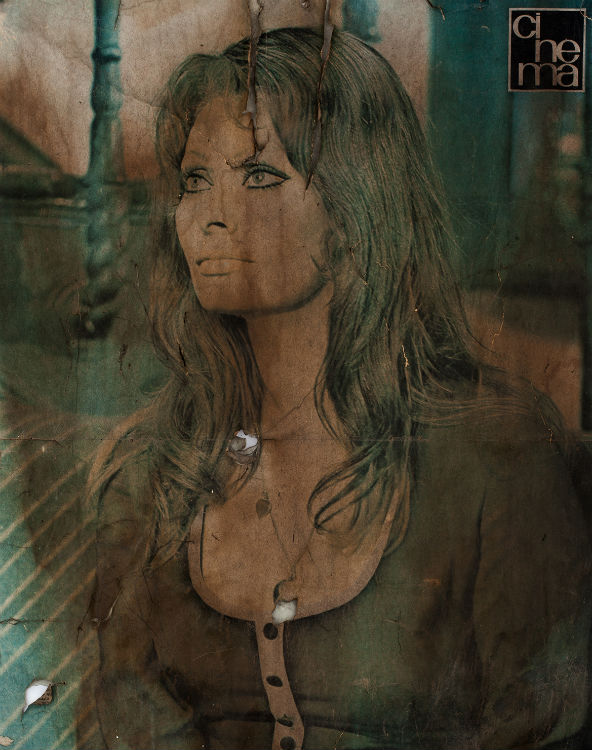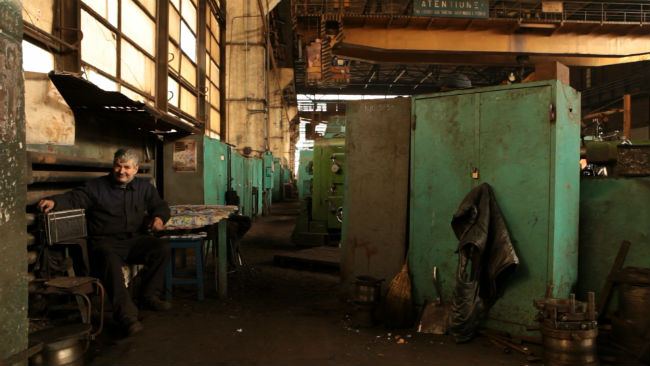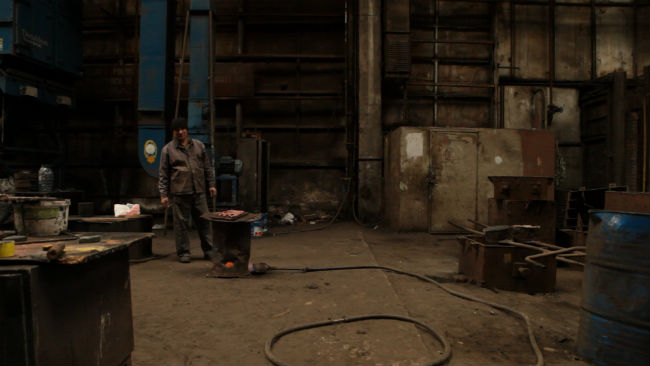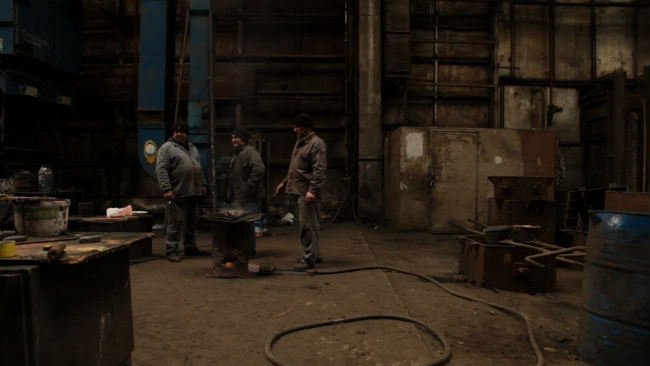Under the Skin
Miri Mor
Indie Photography Gallery
April.- May 2016
Miri Mor perpetuates in her work shreds of a reality caught up in the twists and turns of time, instances that are still holding on to a tangled past, preserving the spirit of an era gone by. Mor, who shoots in present-day Romania, focuses her lens on old factories erected during the communist era, now derelict and forsaken, on their nameless workers and on the country’s rural inhabitants. These stand as silent witnesses to the double deception the country has experienced, first by the ideological collapse of its former regime and then by disappointed hopes of a globalized capitalism, which brought on social disparity.
In her current exhibition, Mor continues to examine modes of representation of collective memory. By adopting the strategies of a visual study untainted by nostalgia, she undermines received notions and all-too obvious cultural connotations while bringing wider issues to the surface, related to human experience, the dependency on mechanisms of the state, processes of change and historical upheaval. Mor uncovers the traces of the communist past in its decaying gloom, like an era trapped in the wrong historical moment, while formulating a critical outlook on former power structures now in decline. Whether metaphorically or in the concrete sense, the experience of death and an ambivalent stance towards the past run throughout her work, displaying warning signs and the omen of an unknown future and ruin.
A series of still photographs titled Personal Objects (2015) shows the contents of personal lockers in a communist-era factory where the workers store their humble belongings. The lockers were broken open as it were to exhibit their modest and functional contents of dishes, heaters and work tools. Like some x-ray image that penetrates beyond the “iron curtain,” the image exposes a generic existence and objects of indistinctive, impersonal character – except perhaps a miniature portrait of the country’s former dictator, Nicolae Ceaușescu. This is a display of poverty and dereliction, of both an emotional and physical decay.
A similar outlook can be detected in Past Perfect (2016), a 4:30-minute video that runs continuously in a wooden box propped on a tripod, likes a camera obscura with a peephole which gives the feeling of a voyeuristic gaze into a private, enclosed realm. The video comprises of three separate sequences, all shot at the same heavy industry facility and showing the daily routines of its workers at present. Screened in a loop, the indifferent sequencing of the three video segments recalls an industrial assembly line; however, the daily routine of the workers is no longer one of systematic productivity, but rather of idleness and leisure: They feed pigeons, listen to the radio and cook lunch on a makeshift grill. Much like many who were employed in the workforce of the “old industry” they still earn low wages, especially now that this branch of the industry is dying out. Their skills are limited to the job they were originally trained for and now they spend their time in near idleness, bound to production lines that have been terminated or are running only partly.
A pair of still photographs untitled (2014–2015) brings the faded portraits of two international movie stars, Sophia Loren and Arnold Schwarzenegger, albeit in an advanced state of decay. The portraits are photographed from the front covers of old entertainment magazines that Mor found in factories across the country, either deserted or in the process of dissolution, still adorning their gloomy walls. These images of faded Hollywood glamour were isolated from their surrounding, yet the signs of time and decay are clearly visible in them, suggesting illness and accelerated aging. In their present state, these discolored images embody the false promises and deceptive beauty of the capitalist dream machine.
Three portraits titled Nursing, Feeding and Play (2014) make up the exhibitioon’s eponymous series, Under the Skin. On first impression, they seem to belong to a tradition of idyllic country life: a woman, a man and a child each pose against the lush backdrop of gorgeous countryside views, mountains and prairies. Posing in traditional festive costumes, in each portrait the subject interacts with the flayed body of a dead animal. The woman nurses a lamb in her arms in a maternal gesture; the man is seated on a tree trunk with a dead pigeon laid beside him; and the child lovingly carries a rabbit. The meticulous staging of these highly aestheticized portraits verges on the saccharine, with overtones of nation and tradition giving way to an ironic and ambivalent look at the antithetic values of life and death.
Mor’s body of work is marked by its fine execution, bringing to mind the thoroughness of a documentary project. Yet the staging and digital editing practices she employs in her work are meant to heighten, from an ironical standpoint, the manipulative potential inherent in those scenes. Her staged documentation captures the experience of life’s ephemerality and the passing of time, as well as the growing divide between reality and fantasy.
Sally Haftel Naveh
Past perfect 2016 from Miri Mor on Vimeo.

